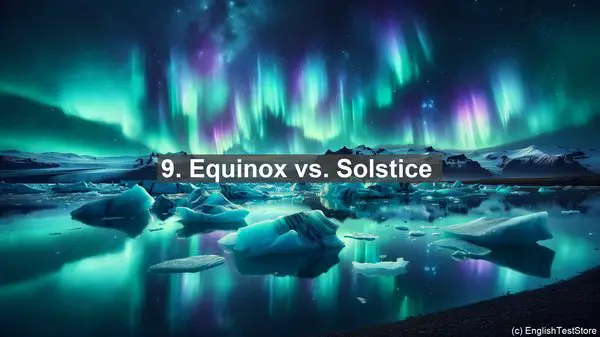Introduction
Welcome to our planetary sciences class. Today, we’ll be discussing a topic that often causes confusion among students: commonly confused words. Let’s dive in!
1. Comet vs. Asteroid
Comets and asteroids are celestial bodies that orbit the Sun. However, there’s a key difference. Comets are composed of ice, dust, and rocky material, while asteroids are primarily rocky or metallic. So, comets have a characteristic tail when they approach the Sun, while asteroids do not.
2. Meteoroid vs. Meteor vs. Meteorite
These terms are often used interchangeably, but they refer to different stages of the same object. A meteoroid is a small rocky or metallic object that orbits the Sun. When it enters the Earth’s atmosphere and starts to burn up due to friction, it’s called a meteor. If any part of the meteoroid survives and lands on Earth’s surface, it’s called a meteorite.
3. Revolution vs. Rotation
When we talk about a celestial body’s revolution, we’re referring to its movement around another object. For example, Earth revolves around the Sun. On the other hand, rotation refers to a celestial body spinning around its own axis. So, Earth’s rotation is what gives us day and night.
4. Nebula vs. Galaxy
Nebulas and galaxies are both vast, beautiful structures in space. However, there’s a distinction. Nebulas are clouds of gas and dust, often the birthplaces of stars. Galaxies, on the other hand, are enormous systems of stars, gas, and dust, held together by gravity. Our Milky Way is an example of a galaxy.

5. Solar System vs. Galaxy
While we’re on the topic of galaxies, let’s clarify the difference between a solar system and a galaxy. A solar system, like ours, consists of a star (in our case, the Sun), planets, moons, asteroids, and comets, all held together by gravity. A galaxy, as mentioned earlier, is a much larger system of stars, gas, and dust.
6. Waxing vs. Waning
These terms are often used when describing the phases of the Moon. Waxing refers to the Moon’s illuminated area increasing, while waning means the illuminated area is decreasing. So, during a waxing phase, the Moon appears to be getting bigger, while during a waning phase, it appears to be getting smaller.
7. Terrestrial vs. Jovian
When we categorize planets, we often use the terms terrestrial and jovian. Terrestrial planets, like Earth, are rocky and have a solid surface. Jovian planets, such as Jupiter and Saturn, are primarily composed of gas and have no solid surface. They’re often referred to as gas giants.

8. Aphelion vs. Perihelion
These terms describe a planet’s position in its orbit around the Sun. Aphelion is the point where a planet is farthest from the Sun, while perihelion is the point where it’s closest. For example, Earth’s aphelion occurs in early July, while its perihelion happens in early January.
9. Equinox vs. Solstice
These are important astronomical events that mark the changing seasons. An equinox occurs twice a year when day and night are of equal length. The solstices, on the other hand, mark the longest and shortest days of the year. They’re often associated with the start of summer and winter.
10. Geocentric vs. Heliocentric
These terms describe different models of the solar system. In the geocentric model, Earth is believed to be at the center, with the Sun and other celestial bodies revolving around it. In the heliocentric model, which is the currently accepted one, the Sun is at the center, and the planets, including Earth, revolve around it.
